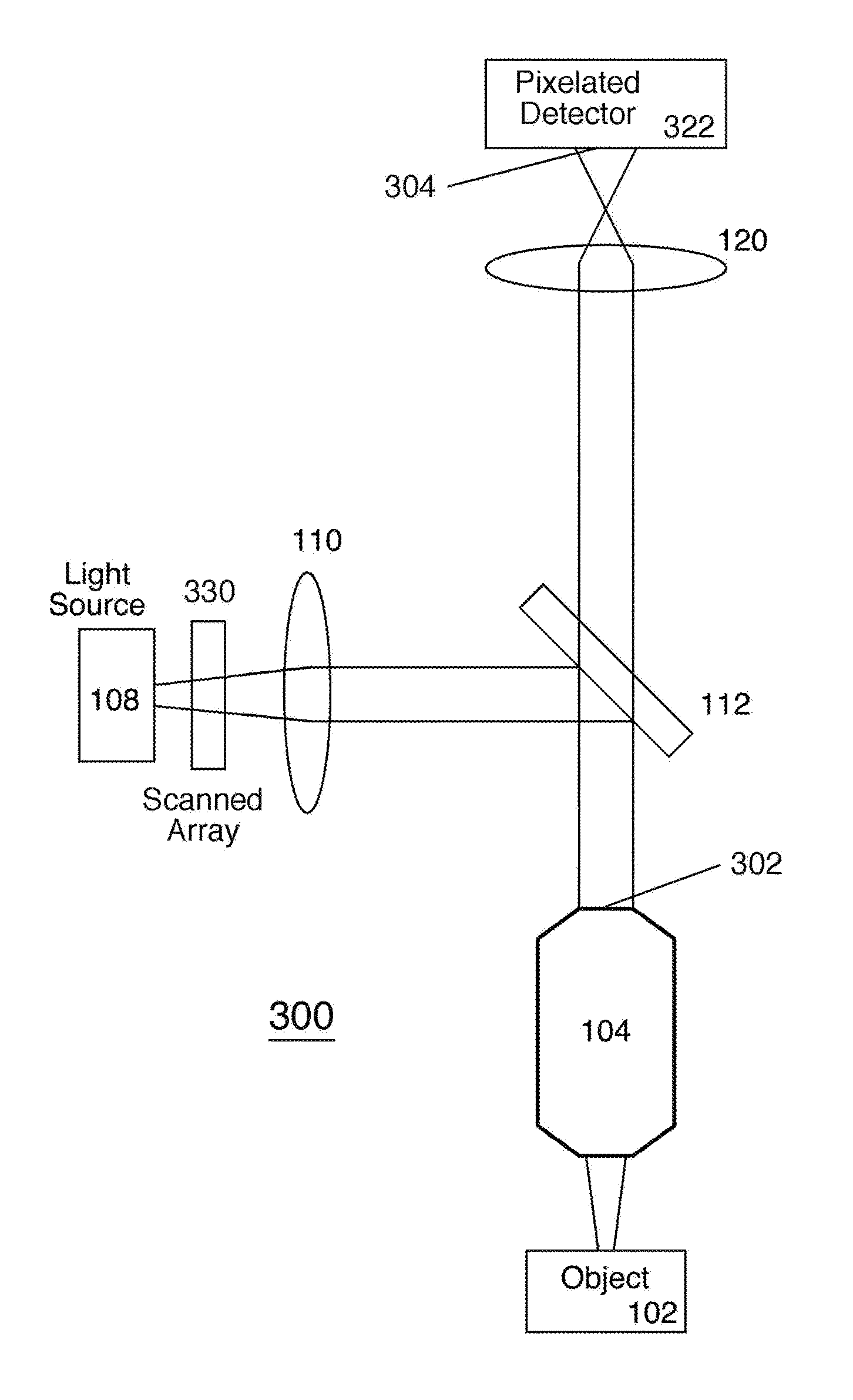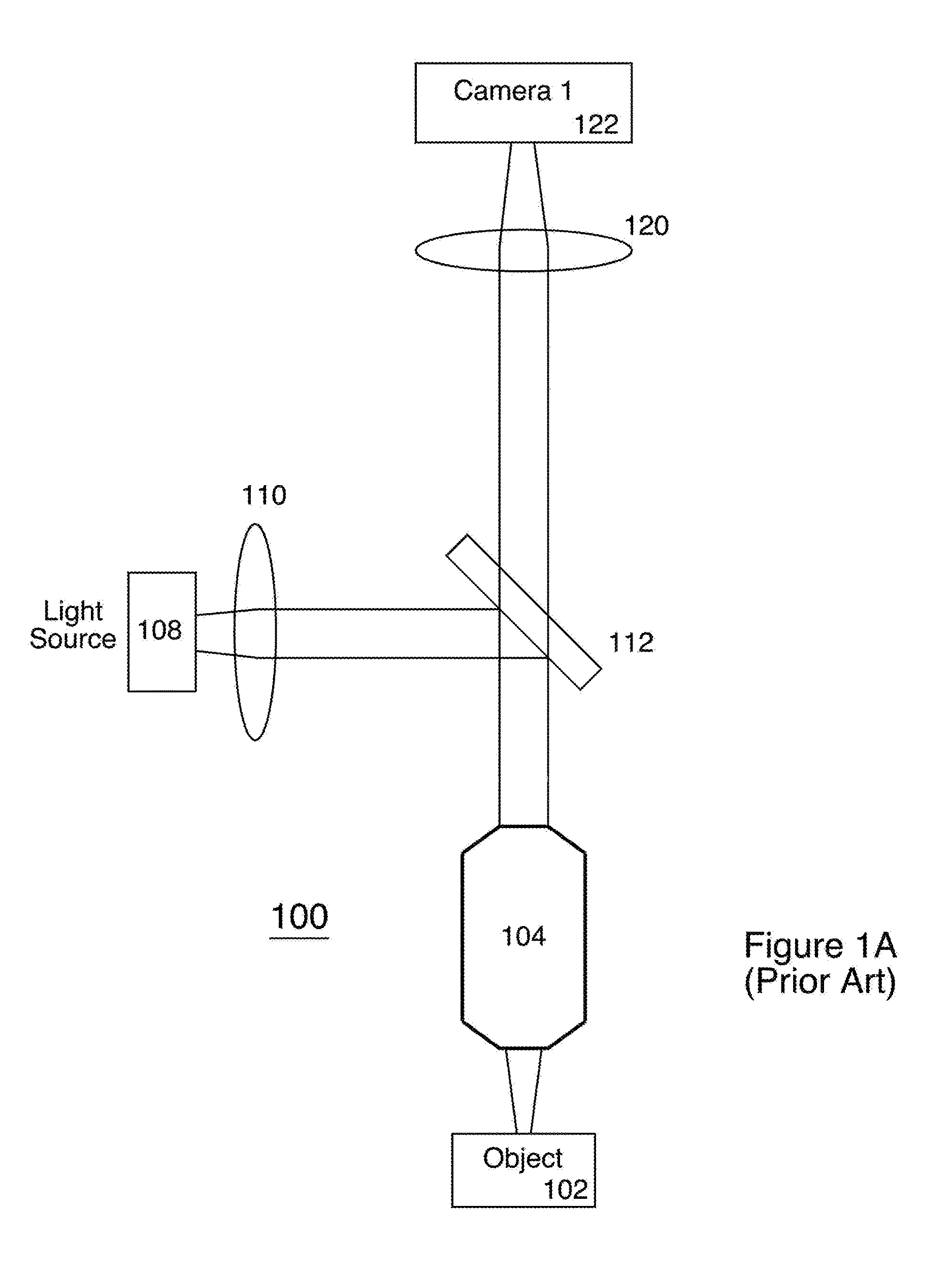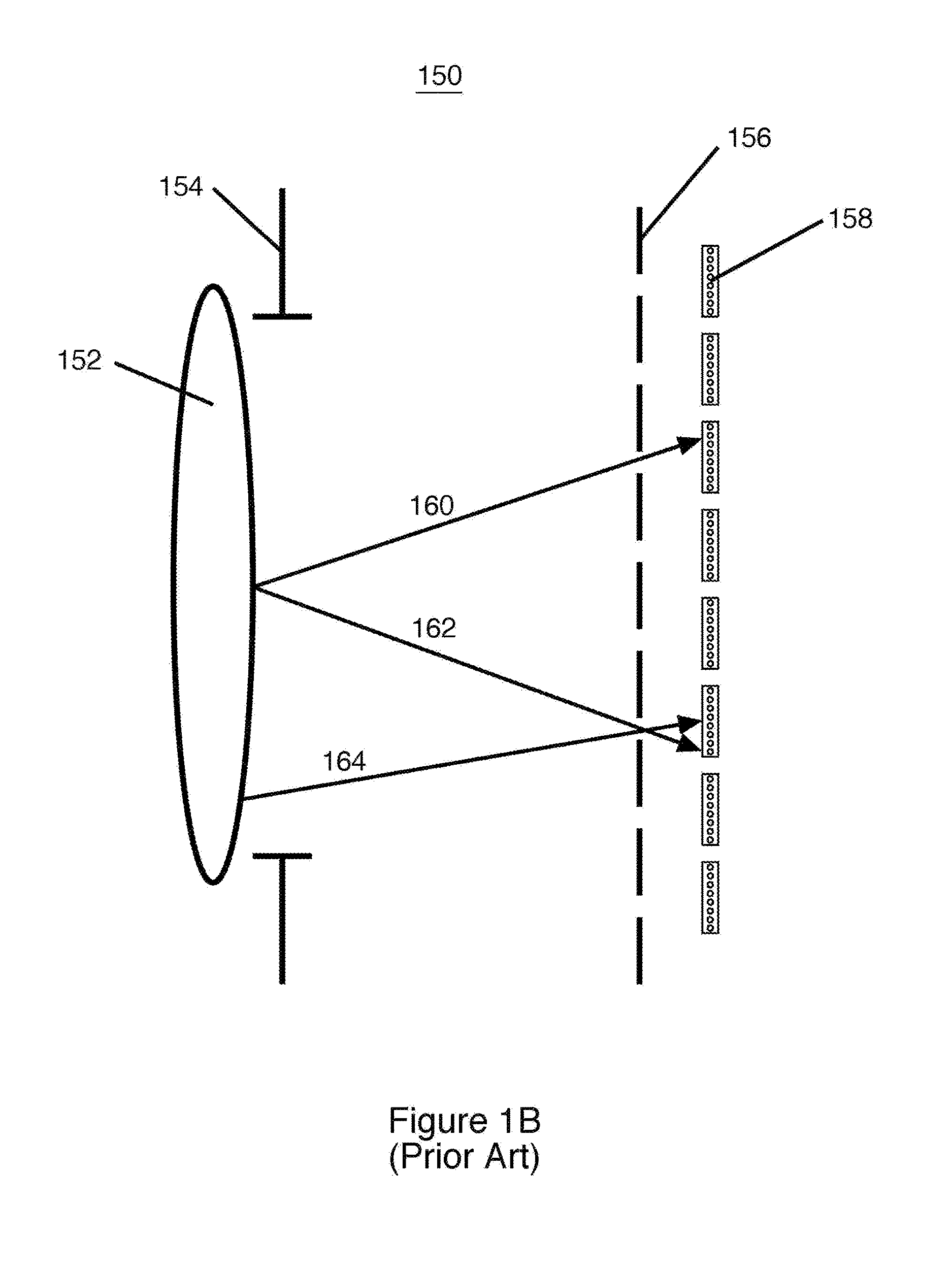Scanning Imaging For Encoded PSF Identification and Light Field Imaging
a scanning imaging and encoded technology, applied in the field of scanning illumination and imaging, can solve the problems of psfs that cannot be deconvolved from an extended object, limited to point source objects, etc., and achieve the effect of being easily identified and removed
- Summary
- Abstract
- Description
- Claims
- Application Information
AI Technical Summary
Benefits of technology
Problems solved by technology
Method used
Image
Examples
Embodiment Construction
[0038]FIG. 1A (Prior Art) is a schematic block diagram illustrating a conventional reflection bright field microscope 100. Object 102 (e.g. a sample containing elements at various depths) is imaged by camera 122 and / or viewed by a user (not shown). Illumination is provided by light source 108. Optical elements include objective lens 104, lenses 110 and 120, and beam splitter 112. Conventional microscopes are capable of discerning tiny objects, but objects are only in focus over a very narrow depth of field.
[0039]FIG. 1B (Prior Art) is a schematic block diagram illustrating a conventional Light Field imaging system 150 with a pinhole array 156 between lens 152 and pixel array 158. Aperture 154 forms the exit pupil of lens 152. Because of pinhole array 156, a specific pixel within pixel array 158 can be labeled in both position on the exit pupil and direction of ray travel. Rays 160 and 162 come from the same point on the exit pupil, but arrive at different pixels in pixel array 158. ...
PUM
 Login to View More
Login to View More Abstract
Description
Claims
Application Information
 Login to View More
Login to View More - R&D
- Intellectual Property
- Life Sciences
- Materials
- Tech Scout
- Unparalleled Data Quality
- Higher Quality Content
- 60% Fewer Hallucinations
Browse by: Latest US Patents, China's latest patents, Technical Efficacy Thesaurus, Application Domain, Technology Topic, Popular Technical Reports.
© 2025 PatSnap. All rights reserved.Legal|Privacy policy|Modern Slavery Act Transparency Statement|Sitemap|About US| Contact US: help@patsnap.com



